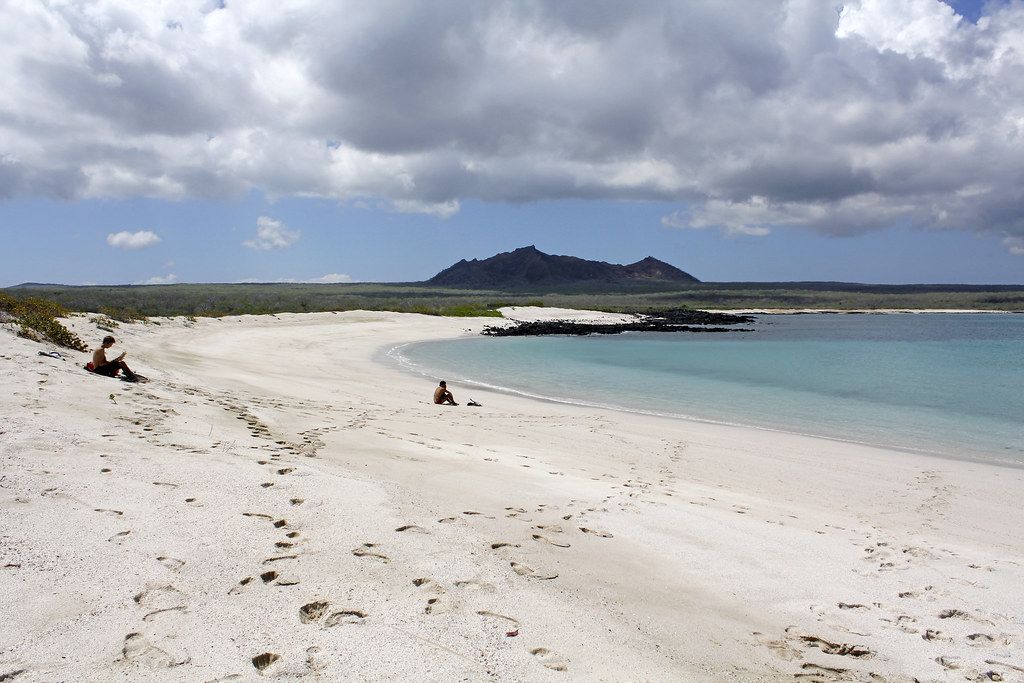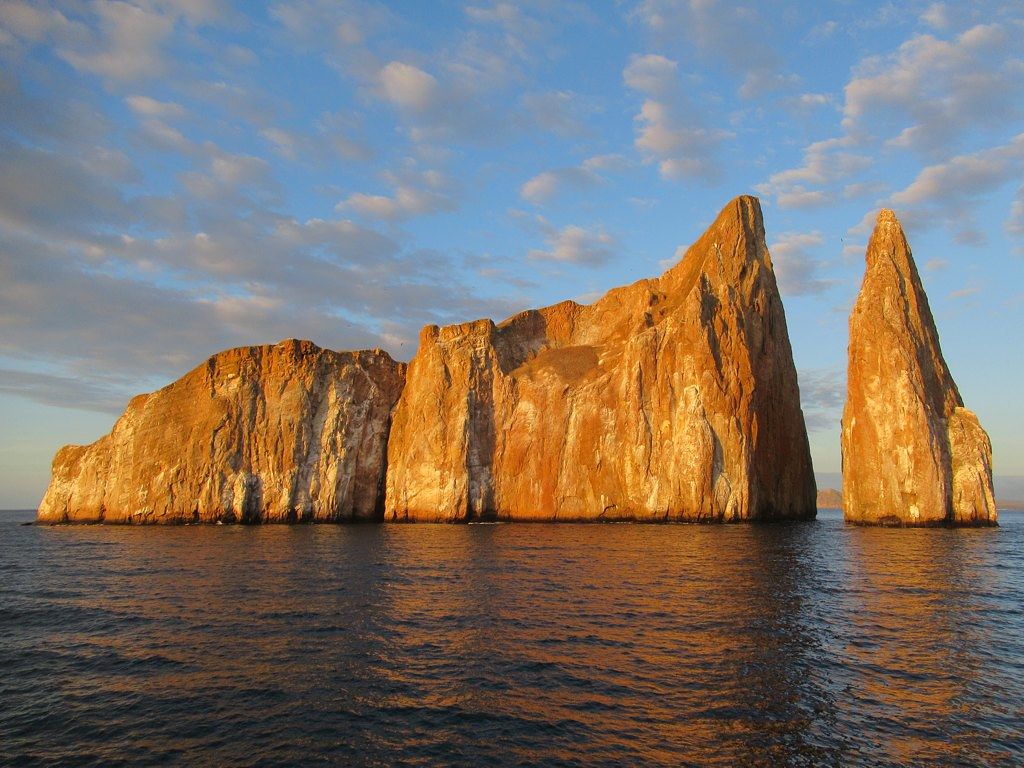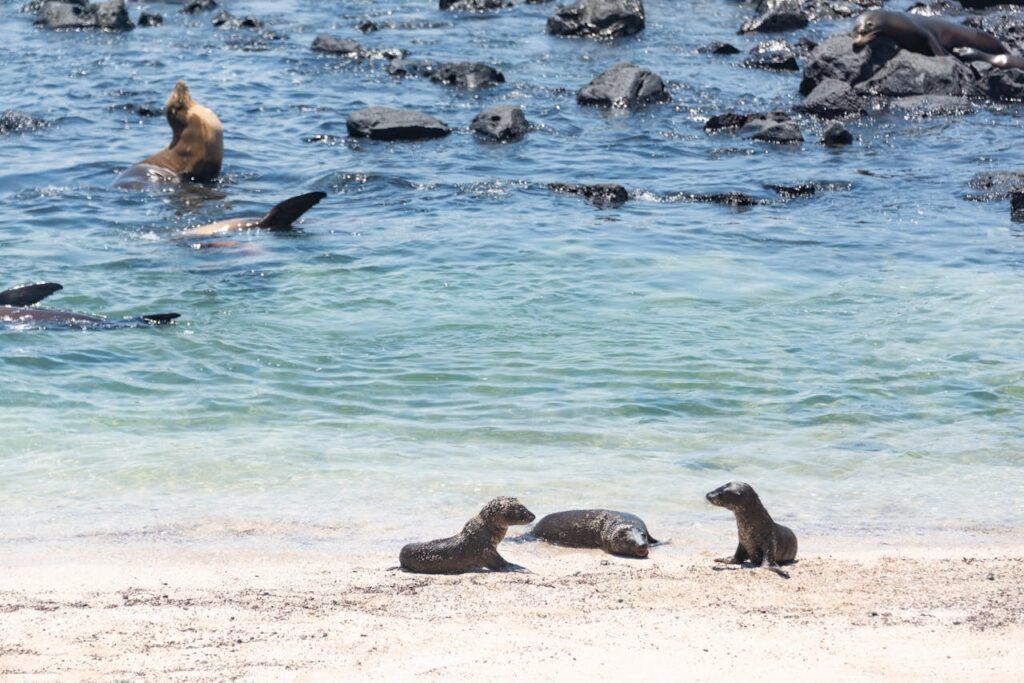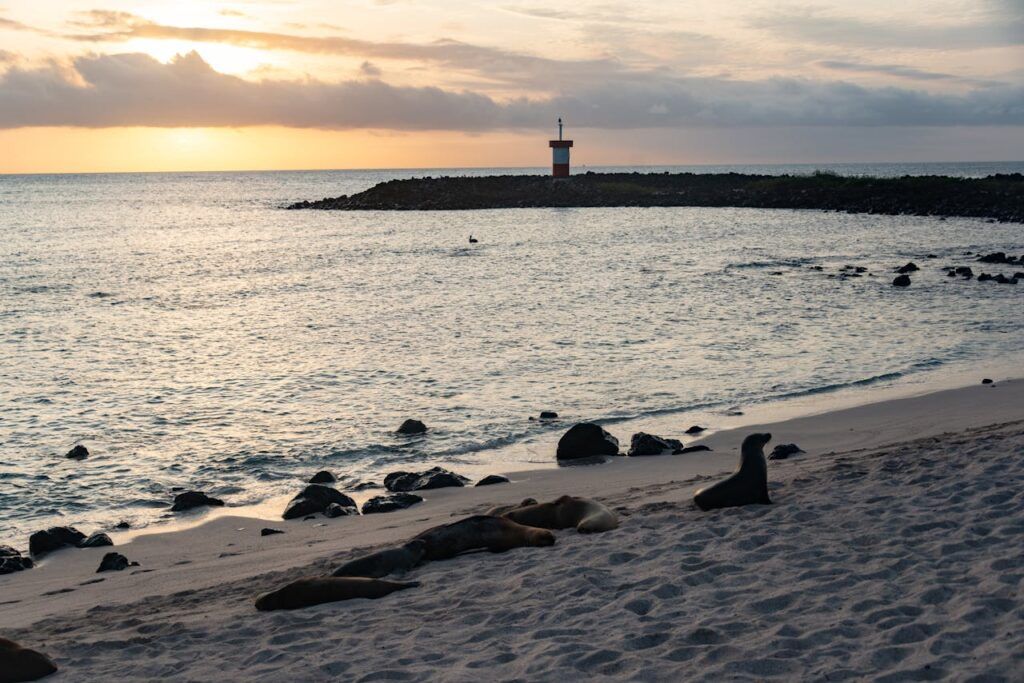Before you plan to visit the beautiful Galapagos Islands, you should decide whether you want to cruise the Islands or explore them yourself. Whatever you choose, we advise you to still take some time to check out at least one island on your own. In this article, we will introduce you to one of the main islands called San Cristóbal.

San Cristobal Island is the easternmost and one of the oldest islands in the Galapagos archipelago. It is named after Saint Christopher, the patron saint of sailors, but it was also known as Chatham Island by the British. It is home to many endemic species, such as the San Cristobal mockingbird, the San Cristobal lava lizard, and the San Cristobal giant tortoise. To explore the whole island, it will be enough to only spend 2 days here. However, there is certainly enough in San Cristobal to keep you staying for much longer.
How to get to San Cristóbal?
Galapagos islands are part of Ecuador, so you will have to fly to Quito (UIO) or Guayaquil (GYE) first, and from there to San Cristóbal (SCE) airport. It is located on the southwestern end of the island, about 2 kilometers from the town of Puerto Baquerizo Moreno, which is the capital of the Galápagos province. Therefore, you can choose to walk for about 20 minutes or to get a short taxi ride to reach the town.
The airport serves domestic flights to and from Guayaquil and Quito, operated by Avianca Ecuador and LATAM Ecuador, both with similarly priced flights either direct from Guayaquil or from Quito with a stop off in Guayaquil anyway. The stop-off in Guayaquil is just to pick up extra passengers, so you will not need to leave the plane. It takes about two hours flying from Guayaquil and about 4 hours from Quito, depending on the length of the stop-off.
There are also taxi boats shuttle between Santa Cruz and San Cristobal that runs twice a day for $30 in one way. This can be an uncomfortable two-hour journey, so take seasick tablets just in case. Tickets can be bought in several tour offices near the port in either San Cristobal town or Puerto Ayora in Santa Cruz.
Accomodation in San Cristóbal
Like all of the main islands in the Galapagos, there is a huge variety of accommodation options, ranging from budget hostels to luxury hotels. You can find a place to stay that suits your preferences and budget, whether you want to be close to the beach, the town, or the nature. If you are a backpacker, you may be overwhelmed with choices and end up going for the first thing you see.

If you have the chance, we recommend taking a look and seeing what is available in advance. Prices vary from around $25-$50 per night. If you are staying for a few days and are keen on cooking your own meals and living with some locals, Airbnb and Booking.com are other great options.
What to do in San Cristóbal island
A lot of travelers think that the Galapagos islands are just endless sandy beaches and snorkeling oases. But, these islands have a lot to offer for travelers who want to experience vacation in a different way. Whether you are looking for adventure, nature, culture, or relaxation, you will find it on Galapagos island, particularly on San Cristobal. It is a popular destination for travelers who want to experience the unique wildlife and natural beauty of this UNESCO World Heritage Site. Here are our top unmissable things to see in San Cristobal:
Kicker Rock
Kicker Rock is located around 2 hours off the northwestern coast of San Cristóbal. It is open to both snorkelers and divers though the current can be a little strenuous. A two tank dive will set you back around $200 whereas a snorkeling tour of Kicker Rock will cost around $150. The advantage of a dive though is, if you are deep enough, there is a good chance of spotting some Hammerheads.

Other marine life at Kicker Rock includes Galapagos Sharks, White-tip Sharks, Large Rays, Pelagic and Reef Fish, Sea Turtles and Sea Lions. You can even spot the Frigate Bird here and the Blue Footed Booby. There are sometimes tours that offer both Kicker Rock and Punta Pitt in one day, which is a great opportunity to try and spot the Red Footed Booby on the island.
Playa Las Loberia
Playa Las Loberia is located just a short walk east of San Cristóbal Airport. This place is, for many, the first impression of the Galapagos, and it is a great experience to see the Sea Lions lazing all over the beach. Quite often, it can get very windy, so you will then rarely see someone in the water. But, on a calm day, this lovely place is pretty jam-packed.

Playa Las Loberia is also popular with surfers because it gets some pretty big waves. As you walk further along the beach, you begin to see a lot of lava, and this is where the marine iguanas tend to frequent. You don’t see many at first, but as your eyes adjust, you begin to see hundreds if not thousands dotted along the coastline.
Cerro Tijeretas
Cerro Tijeretas is a hill where you can hike to a viewpoint that overlooks the bay and Puerto Baquerizo Moreno. The hike can likely be done in trainers or flip flops as some areas have boardwalks, but beyond there, the trail becomes pretty non-existent, and we would suggest some good hiking shoes. Just bring them along in your backpack if you don’t want to wear them all day while you are at the beach. You can walk down the boardwalk from there and take a dip in the little cove. We highly recommend it. This was one of our favorite snorkeling spots in the Galapagos, thanks to a very charismatic sea lion pup.
Darwin’s Bay
This is the cove of water you see when looking down from Cerro Tijeretas. The water here is pretty cold but extremely clear and deep, and it has a plethora of wildlife for such a small radius. There are fish, sea turtles and sea lions. One in particular stole the hearts of all the tourists snorkeling there that day. This guy gave everyone a great performance that day; he was swimming, blowing bubbles, and playing chase. At one point, everyone got out of the water for a sunbathe, and it was clear that the little guy was knackered as he joined in for a quick power nap.
It was short lived however, because as soon as there were people in the water again he jumped right back in, he just wanted to play and we loved his enthusiasm. Another great thing about this very memorable experience is that it is free. Yes the Galapagos can cost a lot (flights, accomodation, etc) but you can spend your days lazing at the beach and snorkeling/hiking, you won’t pay a cent and you get to meet fellas like this.
Playa Punta Carola
Playa Punta Carola is another great beach where you can relax, swim, snorkel, or surf. It has an abundance of Sea Lions, both young and old, splashing around in the waters. You can usually tell the young ones from the old, not just because of their size, but the Sea Lion pups are much more curious and love to play.

There was one particular sea lion on the beach who decided at one point he didn’t want to get in the water, and every time he went close, the Sea Lion would chase him off. This little cove is also known as the best spot for surfing on the whole island of San Cristóbal. However, when we were there, the water was pretty calm, so it was likely hit-and-miss.
Interpretation Center
The Interpretation Centre is a great way to escape the heat and learn more about the ecosystem of the Galapagos Islands. There is a wealth of knowledge here, and you could definitely spend a few hours reading all the interesting facts, statistics and history of the Galapagos Islands. Entry to the interpretation centre is free and it has exhibits on natural history, human history and conservation and development.
Hiking around the western part of San Cristóbal
When you return to San Cristóbal Island after your cruise or other trips, we suggest spending a day walking around and exploring the western part of the island by the Interpretation Centre. The great thing about this area is that you can explore all the spots in half a day, a full day or longer. It caters to everyone’s time budget.
La Galapaguera
La Galapaguera is a tortoise reserve, sanctuary, and breeding center that was opened in 2002 by the Galapagos National Park Service to protect and restore the population of the endangered San Cristobal giant tortoise. It is located in the northeast part of the island, in the highlands, about one hour by car from the town of Puerto Baquerizo Moreno. This reserve covers an area of 12 hectares, where the tortoises can roam freely in a semi-natural environment that mimics their original habitat.
La Galapaguera is open to the public every day from 8:00 AM (8:00 hours) to 4:00 PM (16:00 hours), and the entrance is free of charge. You can visit the reserve by joining a highlands tour, hiring a taxi, or renting a bike. However, be prepared for some uphill cycling if you choose the latter option. The reserve has a well-marked trail that leads you through the property, where you can observe the tortoises in their natural behavior, such as eating, resting, or mating.
Other things to do in San Cristobal island
If you have some free time, we advise taking a boat tour to nearby islands or islets, such as Española, where you can see albatrosses and sally lightfoot crabs, or Isla Lobos, where you can observe sea lions, frigate birds, and blue-footed boobies. Also, you can spend some time at Laguna El Junco, the only freshwater lake in the Galapagos, where you can see frigate birds, finches, and other birds drinking and bathing in the water.
Check out more articles about Galapagos:

